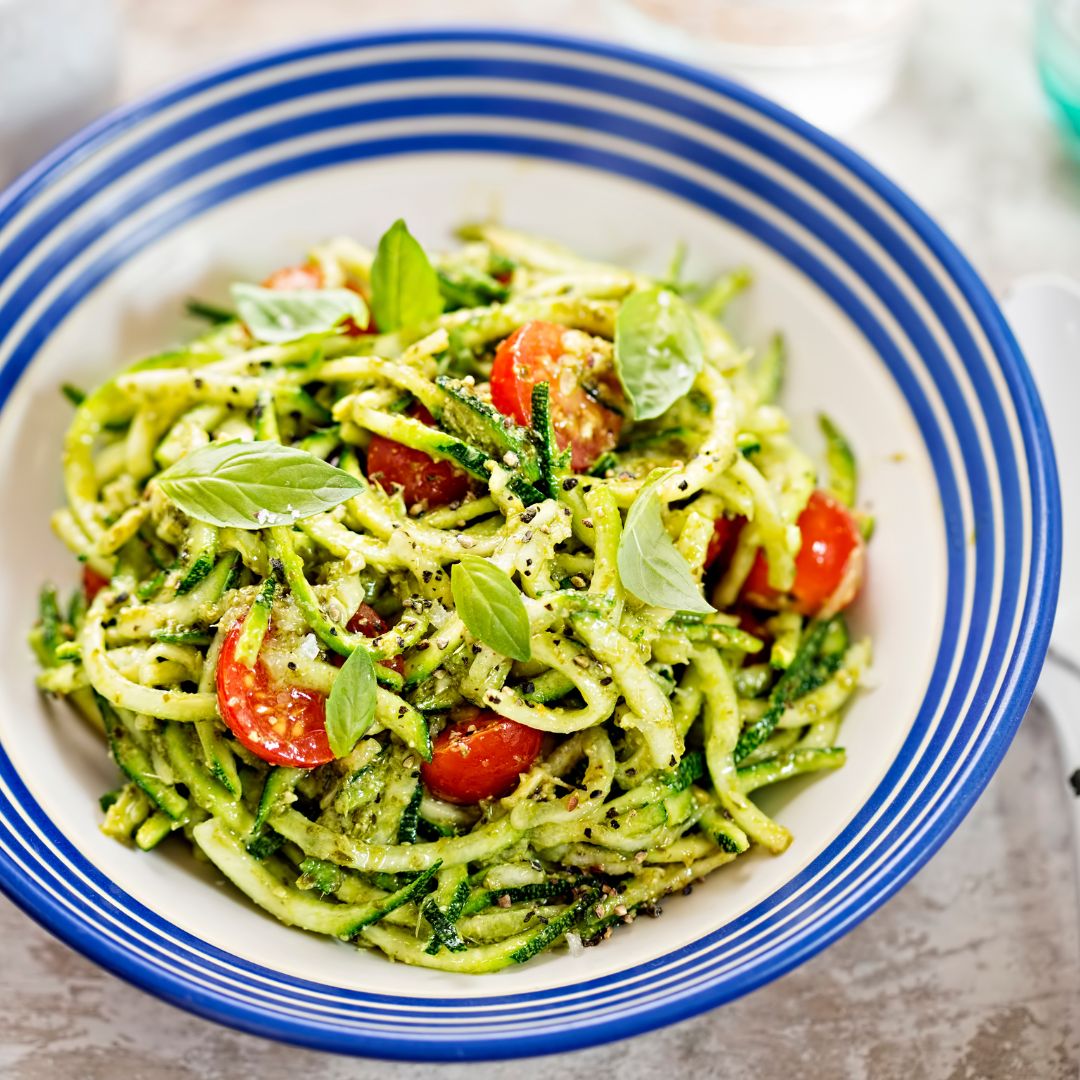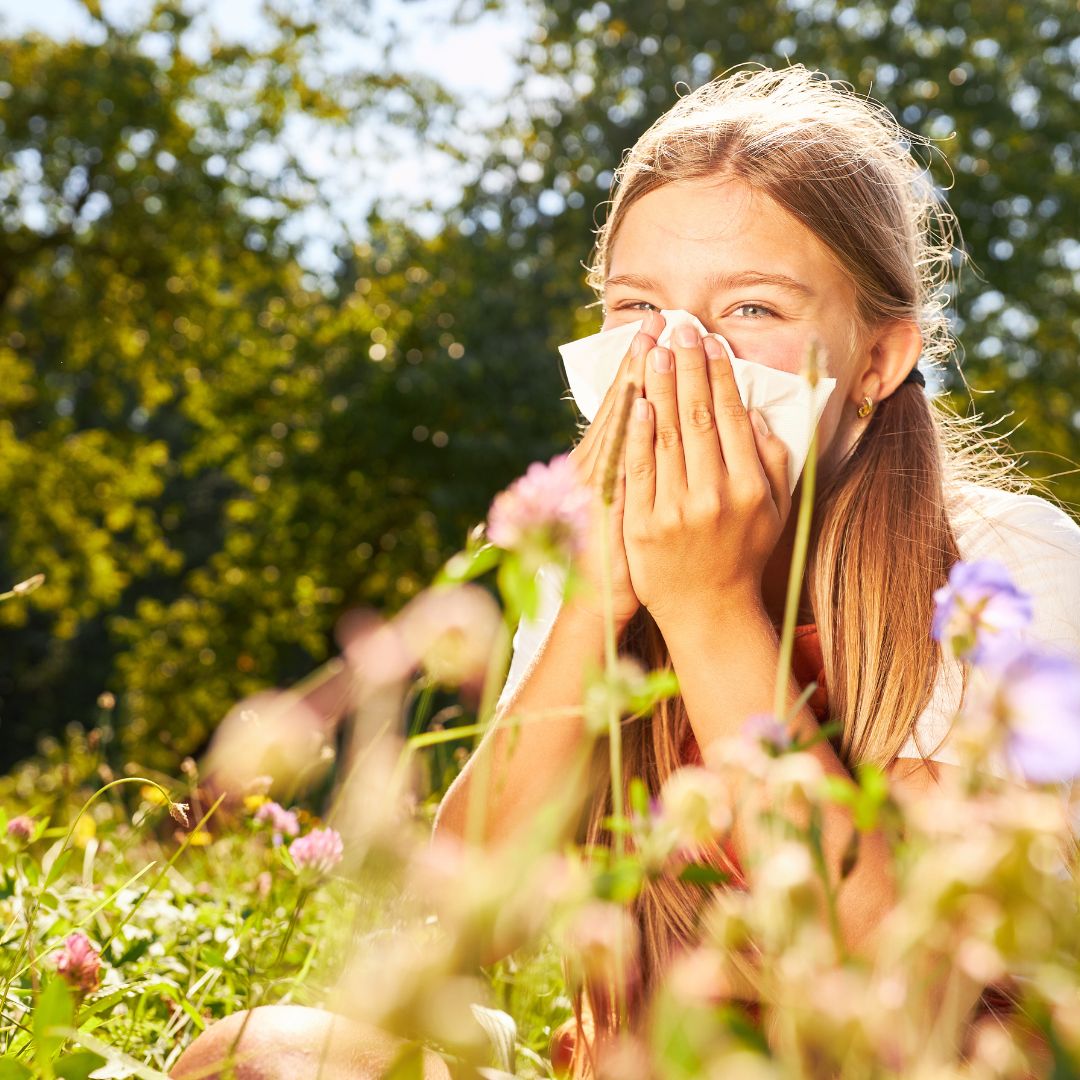
Easy Ideas for Everyday Activity
If you’ve not exercised for a while, or if it’s not really ever been on your agenda, starting movement can be a daunting task. Firstly, if you have any health conditions or physical issues, or you just haven’t moved for a long time, check with your GP or healthcare provider that it’s ok to start a new movement programme.
Once that’s checked off, start slowly. Adding in just one exercise session per week and doing it consistently is much more beneficial than trying to exercise every day and only managing it for a week. Start slowly, build the habit, and then layer on more types of movement.
Additionally, if this is new to you, try out a variety of different activities. You might love the sounds of nature whizzing around on your bike in the countryside, or you may prefer pounding techno in a spin studio. The main thing is to find out what floats your boat.
Here are some simple ideas of how to incorporate movement easily into your day:
Incorporating stretching exercises into your daily routine can help improve flexibility and reduce muscle stiffness caused by prolonged sitting. Check out examples on YouTube or Google a local class.
Taking short breaks to stand up and walk around can help increase blood flow and reduce the negative effects of prolonged sitting on the body. Set an alarm on your phone to remind you to get up and move around, or if you have a smart watch enable the notification.
Incorporating strength training exercises, such as bodyweight exercises or light resistance training, can help counteract the muscle weakness and imbalances that can result from prolonged sitting. Here it might be worth investing in some expertise – online programmes such as with Caroline Girvan or Joe Wicks are available, or see if there are local classes or PTs you can work with.
Practicing yoga or Pilates can help improve posture, strengthen core muscles, and increase flexibility, all of which can help counteract the negative effects of sitting for long periods. There are heaps of online programmes, Yoga with Adriene being one of my faves. Or look online for local teachers and classes.
Incorporating cardiovascular exercise, such as walking, running, cycling, or swimming, into your routine can help improve circulation, increase energy levels, and reduce the risk of chronic diseases associated with prolonged sitting. What did you love as a child? Were you always out on your bike, or a familiar figure at the local pool. Tap into that. It’ll feel hard at first, but you’ll get into the swing of it.
This may sound silly, but simple exercises that can be done at your desk, such as seated leg lifts, shoulder rolls, and desk stretches, can help reduce muscle tension and improve circulation while at work. This can be especially helpful if you really can’t get away.
Start small but be consistent. And before you know it, exercise will be part of your life!
Disclaimer: The information provided by the health and wellness coach is not intended to be a substitute for professional medical advice, diagnosis, or treatment. You should always consult your doctor or other healthcare provider before changing your diet or starting an exercise programme.

Courgetti – Three Ways
At this time of year courgettes are everywhere. If you are lucky enough to have a veg patch, you are probably swimming in them. If you’re neighbours with someone with a veg patch, you’re also probably swimming in them. And they’re also super cheap in the supermarket.
Courgetti is basically spiralised or shredded courgette that can be used in place of pasta. This makes for a lighter lunch, especially if you are looking to cut down on carbs, and it increases your veg intake. You can also mix with spaghetti to give you a half-and-half veg/pasta mix which is quite tasty.
Courgettes take on the flavour of what’s around them, so it’s important to make that tasty. Here are three quick options that you can use for lunch.
First spiralise two good sized courgettes, then choose how you want to transform them into a delicious lunch for two.
CHILLI, LEMON, RICOTTA AND MINT
½ red chilli, thinly sliced
50g soft ricotta
Good quality olive oil
½ small pack mint, leaves picked
Zest and juice of lemon
Salt and pepper
PESTO (VEGAN)
Bunch basil
4 generous handfuls spinach
1 tbsp lemon juice
1 tbsp pine nuts
1 clove garlic
3 tbsp olive oil
2 tbsp nutritional yeast flakes
12 chopped cherry tomatoes
2 tbsp walnuts, chopped
CARBONARA
1 clove of garlic, diced
4 slices bacon
4 eggs (depends on hunger)
2 tbsp grated parmesan

Are You Spending Too Much Time Sitting Down?
In today's modern society, sedentary lifestyles have become increasingly common, largely due to the types of jobs we do and the advancements in tech. Many people spend most of their day sitting at a desk, in front of a computer screen, or in a vehicle. But research has shown that prolonged sitting can have detrimental effects on overall health and can contribute to the development of chronic health conditions.
Researchers analysed 13 publications, which included more than one million people, and found that sitting for more than eight hours without any physical activity is associated with a mortality risk comparable to that caused by obesity and smoking.
But how can sitting do this to us?
Physical effects
Sitting for extended periods of time can lead to poor posture, which can result in muscle imbalances, tightness, and pain, particularly in the back, neck, and shoulders. Over time, this can lead to the development of chronic musculoskeletal conditions such as back pain, neck pain, and even spinal disc compression. Plus, sitting for long periods of time can also contribute to the weakening of muscles in the core, hips, and legs, which are essential for maintaining proper posture and supporting the spine. We all feel this – if you’ve been trapped at your desk for an hour long meeting, it can take a few moments for you to unfurl yourself as you stand up. And don’t talk to me about the accompanying noises… So, all in all, not what we were designed to do – and therefore not great for our physical wellbeing.
As well as musculoskeletal issues, prolonged sitting has been linked to an increased risk of developing heart disease. Research has shown that individuals who sit for long periods of time have a higher chance of high blood pressure, high cholesterol levels, and an increased risk of heart disease overall. This is partly due to the fact that sitting for that long can lead to a decrease in circulation and blood flow, and an increase in inflammation within the body. These factors can contribute to the development of atherosclerosis, or the hardening of the arteries, which is a key risk factor for heart disease.
And it’s not just heart disease - an increased risk of developing metabolic conditions such as obesity and type 2 diabetes has also been connected with sitting around for long periods. It can cause metabolism to slow down, muscle activity is decreased, and blood sugar levels can become elevated. Over time, this can lead to insulin resistance, a key characteristic of type 2 diabetes. Additionally, research shows that people who sit for prolonged periods of time are also more likely to engage in mindless eating habits, consume unhealthy foods, and have an overall higher energy intake, which can contribute to weight gain and obesity.
Mental health effects
It doesn’t end there. While we can understand that lack of movement can have a profound effect on our physical wellbeing, did you know that it can also have negative effects on mental health and overall well-being. Research has shown that people who sit for long periods of time are more likely to experience feelings of anxiety, depression, and stress.
This could be due to a combination of physical factors, such as poor posture and musculoskeletal pain, and psychological factors, such as decreased social interaction and isolation. Additionally, sitting for long periods of time can also lead to decreased cognitive function and memory retention.
The impact of prolonged sitting on overall health is substantial. Negative effects on musculoskeletal health, cardiovascular health, metabolic health, and mental health cannot be ignored. So, it’s important for all of us to be aware of our sitting habits and try to incorporate more movement and physical activity into our daily routines.
How movement can positively impact the negative effects of prolonged sitting
Thankfully the analysis which compared sedentary living to smoking also noted that moderate-intensity physical activity for 60 to 75 minutes a day can mitigate the negative health effects of prolonged sitting.
Here’s how:
Movement helps improve circulation, which can counteract the negative effects of prolonged sitting on heart health and blood pressure.
Sitting for long periods can lead to poor posture and muscle imbalances. Incorporating movement throughout the day can help stretch and strengthen muscles, improving overall posture
Sitting for long periods can contribute to back, neck, and joint pain. Moving regularly can help alleviate stiffness and tension in these areas.
Sitting for extended periods can slow down metabolic rate. Adding movement breaks throughout the day can help increase calorie burn and maintain a healthy metabolism.
Physical activity can have a positive impact on cognitive function and mental well-being. Incorporating movement throughout the day can help improve focus, productivity, and overall mood.
Movement boosts circulation and oxygen flow, promoting vitality and reducing feelings of fatigue associated with prolonged sitting.
Regular movement is essential for maintaining a healthy weight, reducing the risk of chronic diseases like diabetes, cardiovascular disease, and certain types of cancer that can be exacerbated by prolonged sitting.
So, what are you going to add into your day?
Disclaimer: The information provided by the health and wellness coach is not intended to be a substitute for professional medical advice, diagnosis, or treatment. You should always consult your doctor or other healthcare provider before changing your diet or starting an exercise programme.

Travel without the tummy drama:
Your guide to a happy gut on holiday
We all know the feeling. You’re on holiday. The sun’s out, the sangria’s flowing, and everything should be feeling great - except your tummy has decided to stage a protest. You’re bloated and uncomfortable and you’re only a few days in. What if the rest of your well-earned rest is just like this? And didn’t the same happen last year?
If your digestion tends to fall apart the minute you step outside your usual routine, you’re not alone. Travel might be great for the soul but it’s not always great for the gut. Flying, new foods, disrupted sleep, eating at odd times (or just eating everything), can be a perfect storm for bloating, constipation, wind, or that “I’ve swallowed a beach ball” feeling. Now’s the time for a new holiday regime so you can enjoy your time away – and it starts in the weeks before you travel.
Why travel upsets your digestion
Let’s start with the obvious: travel puts pressure on your digestive system in all sorts of ways.
Air travel is dehydrating, which dries out your gut (even your colon gets thirsty). You’re probably sitting more and moving less, which slows down motility. There’s also jet lag, sleep disruption, foreign bugs, a totally different diet as well as the fact that your usual ‘go-to’ breakfast has been replaced with a hotel buffet and a lot of croissants.
Even just not having a routine can be enough to throw your gut off. Our digestive systems are creatures of habit; they thrive on rhythm. Suddenly eating three hours later than usual or skipping meals altogether (hi, travel day chaos) can leave your gut going, “What. Is. Happening.”
How to give your gut a fighting chance
Your holiday digestive health action plan doesn’t need to be a military operation, just a few small habits that can slide easily into your suitcase.
First, hydration. Start drinking more water the day before you travel, not just once you’re already airborne and begging the flight attendant for another thimble-sized cup. If you’re flying, take an empty water bottle and fill it up after security.
A magnesium supplement can be a game-changer especially if you’re prone to constipation or feel tense when travelling. It’s an important mineral that is involved in hundreds of different reactions in the body and plays a key role in anything involving muscle – and everything to do with the digestive system is muscular one way or another. Pop a supplement into your evening routine or bring a sachet of magnesium citrate. Do this ahead of travel so you have time to see how your body responds.
What about probiotics? These are definitely worth considering. Whether it’s capsules or travel-friendly sachets, they can help buffer the shock of unfamiliar food and keep your gut bacteria a little more balanced. Ideally, start your probiotics two weeks ahead of time and introduce them before you travel. Look out for formulations that also include the beneficial yeast Saccharomyces boulardii. Probiotics may help prevent / reduce likelihood of some of the common problems associated with holiday travel, including bloating, constipation, food poisoning and diarrhoea.
Anchor your habits
No one wants to be batch-cooking quinoa in your Airbnb or counting macros at the poolside buffet, and nor should you. But you can keep a few gentle habits going that support your gut - and your overall health.
Maybe it’s starting your day with a short walk. Just ten minutes outside can get things moving (in every sense). Maybe it’s packing a few familiar snacks - like oatcakes, trail mix, or a protein bar so you don’t go from “mildly peckish” to eating half a baguette as a snack.
Try to keep at least one or two meals a day consistent with what you’d normally eat. That could be a veggie-packed lunch or your usual breakfast (bonus points if there’s some fibre involved). Your gut loves routine and giving it some familiar fuel can make a big difference.
Don’t underestimate the power of slowing down. Chew your food properly. Breathe while you eat. Enjoy it. Not only will this help your digestion, but it means you’ll actually taste the food instead of inhaling it between excursions.
And when things still go wrong
Despite your best efforts, travel tummy sometimes happens. If you’re a bit bloated or backed up, don’t panic. Up your water, move more, eat lighter (but still nourishing) meals, and prioritise sleep. And if your gut’s not playing ball after you get back? That’s the perfect time to reset. You know where I am if you need me.
If you’re heading away soon and want a gut-friendly travel plan tailored to your body, let’s chat. I can help you feel confident, not constipated. Just click here to book a free call.

Spotlight on hayfever
Itchy, watery eyes? Constantly sneezing? Hello hayfever! Now I really know it’s spring and you’re here to stay – like an uninvited guest – for the next six months. But while Mother Nature can be cruel, she is also kind. It might surprise you to know that changing what you eat can have a big impact on the severity of your symptoms.
According to Allergy UK, as many as 30% of adults and 40% of children suffer from allergic rhinitis (the medical term for the condition), an allergic reaction to pollen. You might start noticing symptoms in March when the tree pollen season starts. Then there’s the grass pollen season, followed by the weed pollen season, which can go on into September.
If this is you, I sympathise: itchy, red or watery eyes; runny or blocked nose; sneezing and coughing; itchy throat, mouth, nose and ears; loss of smell; earache; headache; and feeling exhausted.
There are some foods will make the symptoms of hayfever worse, so try to cut these out or reduce them as much as you can during hayfever season. Other foods are naturally anti-inflammatory, so you’ll want to ensure you’re getting plenty of these in your diet.
Foods containing high levels of histamine can intensify symptoms. These include chocolate (sorry about that), tomatoes, aubergines and many fermented foods like vinegar, sauerkraut, yoghurt, miso, soy sauce, and canned fish.
There are also foods that, while they are not high in histamine themselves, are ‘histamine liberators’ and can trigger your cells to release histamine. These include strawberries, pineapple, bananas, citrus fruits and egg whites.
Foods containing wheat – like bread and pasta, cakes and pastries – can also be problematic for people with grass pollen allergies.
Dairy products like milk and cheese stimulate the body to produce more mucus, making blocked noses or ears much worse. Matured cheeses also tend to contain high levels of histamine. And sugar, which causes your body to produce more histamine, can further exacerbate your symptoms.
Foods to add in or increase when you have hayfever
Some foods are anti-histamine foods and disrupt or block histamine receptors, helping to reduce allergy symptoms. These include foods that contain the plant chemicals quercetin and beta carotene, and those high in vitamin C (see below).
Local honey also may be helpful because, although it contains trace elements of pollen, over time it may help your body become more familiar with the pollen entering your system and reduce the inflammatory response it makes.
Quercetin containing foods
Onions, garlic, goji berries, asparagus, all berry fruits, apples, kale, okra, peppers, plums and red grapes.
Beta carotene containing foods
Sweet potato, carrots, butternut squash, red and yellow peppers, apricots, peas, broccoli, dark leafy greens like kale, and romaine lettuce.
Vitamin C containing foods
Blackcurrants, blueberries, peppers, kale, collard leaves, broccoli, kiwis, mango, courgettes, and cauliflower.
What to drink
Drink plenty of water. Keeping well hydrated is helpful for all aspects of health. In the case of hayfever, it thins the mucous membranes and reduces that ‘blocked up’ feeling.
Green tea is packed full of antioxidants, which are helpful for the immune system generally. It has also been proven to block one of the receptors involved in immune responses.
Ginger tea has been shown to help reduce allergic reactions by lowering your body’s IgE levels (the antibody involved in the specific immune reaction associated with hayfever).
Peppermint tea is worth trying because peppermint contains menthol, a natural decongestant that may help improve sinus symptoms.
Add nettle tea to your shopping list for its ability to relieve inflammation of the upper respiratory tract and ease nasal congestion, sneezing and itching.
An anti-inflammatory approach
Hayfever is an inflammatory condition and may be further helped by including other types of food that calm the inflammatory response. Top of the list are foods containing anti-inflammatory omega 3 fatty acids, which I often recommend to clients struggling with any inflammatory condition. These include all types of oily fish (like salmon, trout, sardines, halibut and cod) as well as flaxseed and walnuts.
Coconut oil is another anti-inflammatory oil and can be used in cooking and baking or added to smoothies.
As well as adding flavour to your food, herbs like parsley, sage, thyme, oregano and basil have anti-inflammatory properties as do many spices, including turmeric, ginger, cardamom, cinnamon, clove, fennel and nutmeg.
And if you’d like to find out more, I offer a range of testing options at my clinic if this is something you would like to explore. Why not book a call?

Everything you need to know about eating well this summer
Here are some simple strategies to support your energy, digestion and wellbeing in warmer weather.
Summer often brings a welcome change of pace. Longer days, more time outdoors and lighter meals all contribute to a shift in how we eat and live. In many ways, it can feel easier to make healthier choices at this time of year. Fresh produce is more abundant, there are more opportunities to be active, and meals can feel naturally lighter.
However, summer also presents its own challenges. Shifting routines, social events, travel, hot weather and less structured days can all disrupt healthy habits. Many people find themselves grazing through the day, eating late at night or relying on less balanced meals simply because structure goes out the window.
This blog brings together simple, practical advice to help maintain energy, support digestion and feel well throughout the summer months.
Prioritise nourishment, not just ‘lighter’ meals
Hot weather often reduces appetite, which can lead to skipping meals or defaulting to salad leaves and little else. While lighter meals may be more appealing, it is important to ensure they still provide the nutrients the body needs to feel satisfied and energised.
That means building meals around protein, healthy fats and fibre. A salad with added chicken, chickpeas, avocado and a wholegrain like quinoa or brown rice offers far more nutritional value than just lettuce and cucumber. Lighter doesn’t need to mean less nourishing.
Think: Mediterranean Diet vibes - colourful fruit and veggies, lean proteins, liberal drizzles of olive oil.
Stay consistent with meal timing
Changes in routine over the summer can make it easy to miss meals or eat inconsistently. Skipping meals often leads to low energy, blood sugar crashes and cravings later in the day.
Aim to keep a regular meal rhythm – ideally three balanced meals a day with one planned snack if needed. This provides structure, supports metabolism, and helps avoid that common pattern of undereating during the day and overcompensating later on.
Even if your appetite is lower in the heat, smaller meals or lighter options such as yoghurt with fruit and seeds, a protein-rich smoothie, or a wrap with hummus and vegetables can help maintain stability throughout the day.
Make space for enjoyment while travelling
Summer holidays are often seen as a time when all healthy habits go out the window. While it is perfectly reasonable to relax a little, it is entirely possible to enjoy food on holiday without feeling sluggish, bloated or off-track.
Before you travel, it’s worth considering which are the key nutrition or movement habits that will travel well. Starting the day with a familiar breakfast (think eggs, fruit and yoghurt, for example rather than a buffet of pastries), staying hydrated, walking whenever possible and including vegetables in most meals can all help you maintain your energy and keep your digestive system working well.
Eating well is not about restriction. It’s easier than you think to eat well, especially if you’ve given some time to thinking about the treats that are important to you while you’re away that ‘make’ a holiday and focus on doing those things rather than ‘all the things’. That might mean enjoying a daily ice cream and the occasional cocktail (but sticking to dry white wine for the remainder) and only having croissants one day in the week rather than every day. You’re still enjoying the ‘fun stuff’ but you’re not going overboard, which might tip you into feeling sluggish during your time away, and result in a post-holiday diet.
Support digestive health – especially in the heat
Gut health is often overlooked during summer, yet it plays a vital role in how we feel. Bloating, sluggish digestion and irregular bowel movements are common when routines change, water intake drops, or unfamiliar foods are introduced.
Hydration is essential. Increasing water intake, especially during travel and warmer days, helps keep digestion moving. Including fibre-rich foods such as fruit, vegetables, legumes and wholegrains supports gut motility. For clients prone to digestive issues, consider recommending magnesium or probiotics as part of their summer supplement routine.
Movement is also important. Gentle daily activity such as walking and swimming can stimulate digestion and reduce bloating, particularly when sitting for long periods during travel.
Build flexible structure into summer routines
Summer routines may look different, but some gentle structure helps maintain momentum without needing a detailed meal plan. A few consistent habits can go a long way.
You might benefit from having a set of go-to meals that require little prep, such as wraps, cold grain salads, or overnight oats. Keeping staple ingredients like tinned fish, eggs, leafy greens, hummus and frozen berries on hand can help simplify decisions during busy weeks.
One thing you can lean into at this time of year is eating mindfully. Perfect for lazy summer meals, ensuring you chew each mouthful well and pause before reaching for food out of habit rather than hunger can also support digestion and reduce overeating.
Let go of pressure and focus on wellbeing
Summer often comes with increased pressure to look a certain way. There’s nothing more than needing to remove clothes to make you feel self-conscious. It is easy to fall into the mindset of needing to ‘get back on track’ or eat perfectly to feel confident in lighter clothes. This rarely supports long-term wellbeing.
Reframing the focus towards feeling energised, supporting digestion, sleeping well and having enough stamina to enjoy summer activities is far more empowering. Clients do not need to eat perfectly to feel good – they need strategies that work with their lives, not against them.
A consistent approach that prioritises nourishment, hydration, and flexibility can help make this summer feel lighter in all the right ways.
If you would like personalised support with summer meal planning, or tips to manage travel, events and busy days, feel free to get in touch. We can create a plan that works for your lifestyle.
![]()
Please get in touch and find out more - I offer a free 30-minute exploratory call.